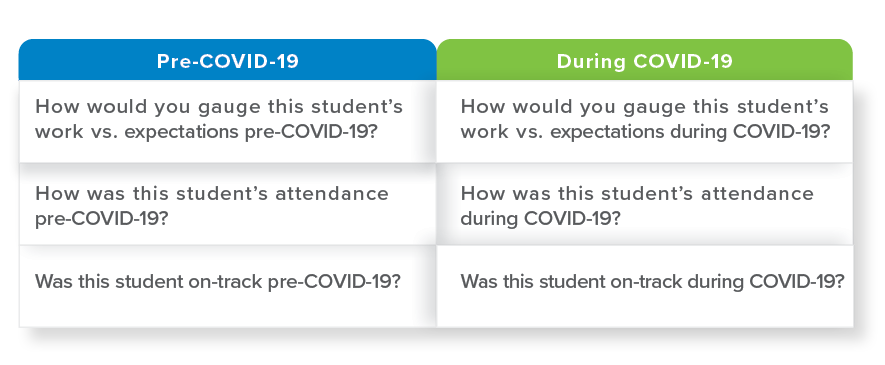
The end of the year has arrived, and teachers everywhere are walking back into their classrooms to pack up for the summer. Those last few days in the building are particularly bittersweet this year. And while the celebrations were different, they still happened. Drive by award ceremonies. Home graduations. Video conference parties. Different but still meaningful.
Now that those celebrations are ending, it’s that not-so favorite time of year for every teacher when they document all that has happened for each student in that permanent record. This task also looks a little different. A lot of the components that typically go into that permanent record are missing - no test scores, no final presentations, missing grades. This doesn’t mean that there is no information to record; it just means that the information needs to be considered differently.
Before we go any further, I have a confession to make.
When I was a young teacher, I would resist opening those permanent records for as long as I could. I wanted to make my own judgments on my students before having my perspective clouded by notes from previous teachers. As time went on, though, I came to realize that ignoring those notes did not best serve my students and that I needed to review that info to make sense of my class. Going through that review meant I spent hours poring over a stack of folders creating charts and transferring data to spreadsheets. The result was that I had a clear picture of my new students and their needs as I started the school year.
Aren’t you glad that the process has changed so much?
Moving back to the here and now, we have a plethora of data at our fingertips for each student, and the end of the year task is now a matter of collating and curating that data. But again, this time we are missing pieces. And the data that is typically collected is reflective of a typical school year. This year was anything but typical. Wondering what you should do differently? Not anything too dramatic, I promise.
Let me give you something to consider.
“Pre and Post” – familiar concept, right? We look at pre and post data all the time to determine growth, changes in learning, and what to teach. In fact, I would say most everything that we do as teachers is grounded in a pre and post mentality. So, take that and apply it to your students. How did they perform pre-COVID-19 and post-COVID-19?
Consider questions like this:

Questions like these that will segment the student’s learning pre and post and will provide an important distinction for next year’s teachers. What you are doing is helping them to understand how your students performed during these unusual times, and that anecdotal information is going to be valuable when the next school year starts.
If you are looking for an easy way to capture that information, then let me suggest taking advantage of the Classroom Scorecard. This tool was created to provide schools and classrooms with an easy way to capture this data and share it back out easily next fall. The Scorecard also includes discussion questions for a team meeting that will help to pinpoint areas of concern. Feel free to use this as best fits your classroom and your school.
Before you close the door on this school year, take a little time to reflect. Reflect on your students, reflect on their progress both pre and post, but also reflect on the challenges that happened and how we rose to meet them. Think of it as field trip where things didn’t go exactly as planned. If you made it back to school with everyone you left with then it was a successful trip. Count your students one more time and then close the door.




